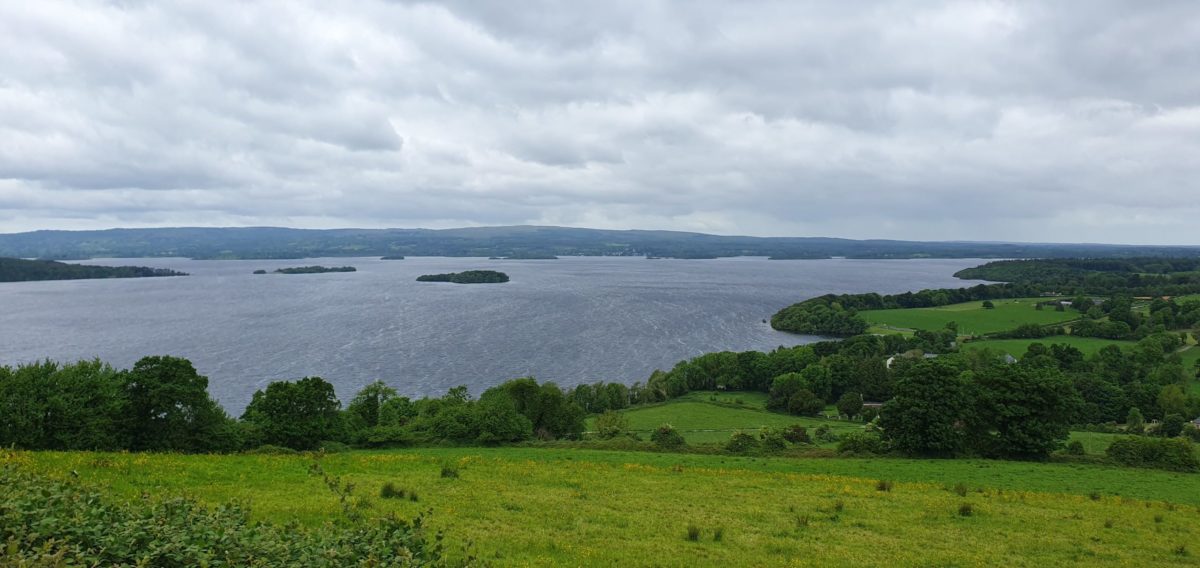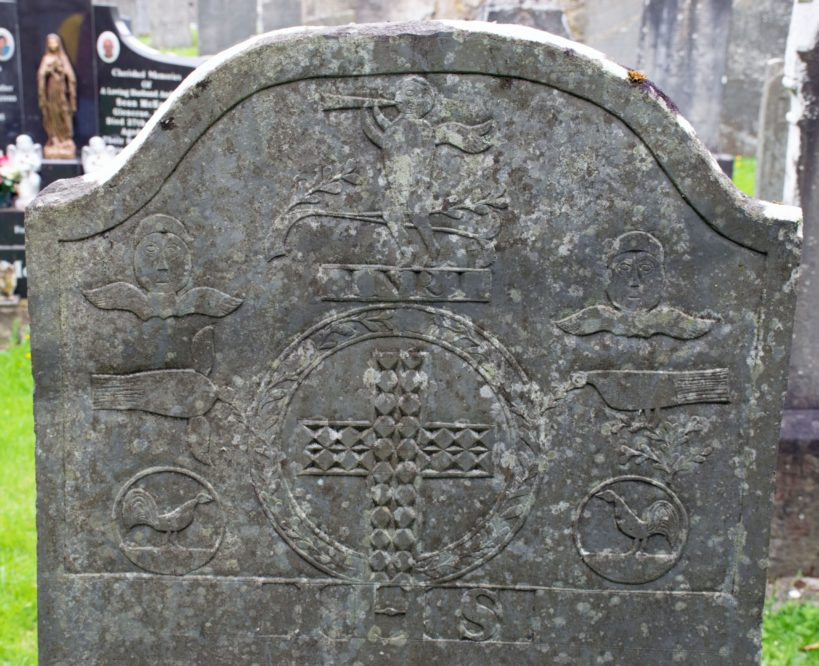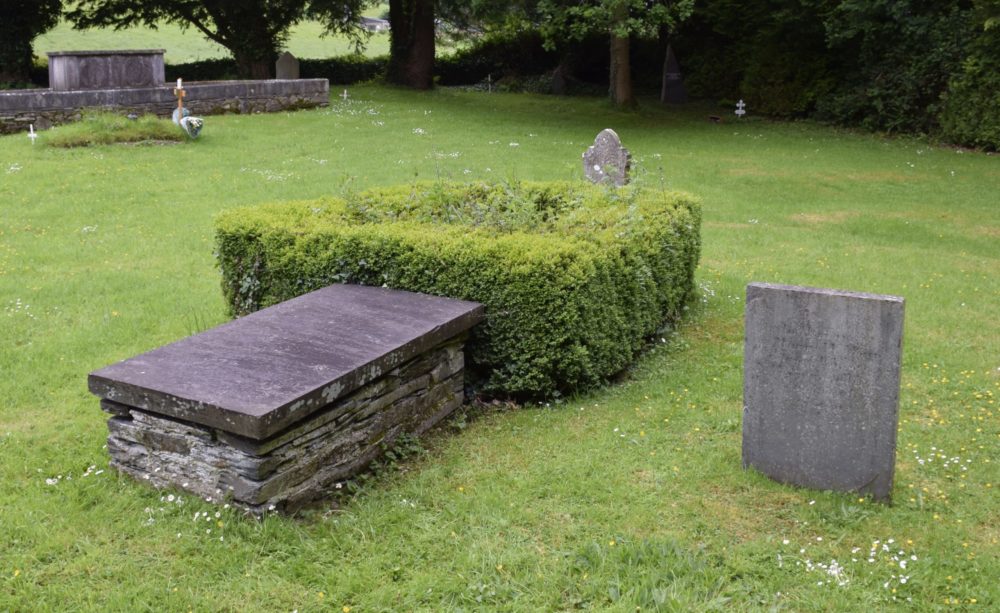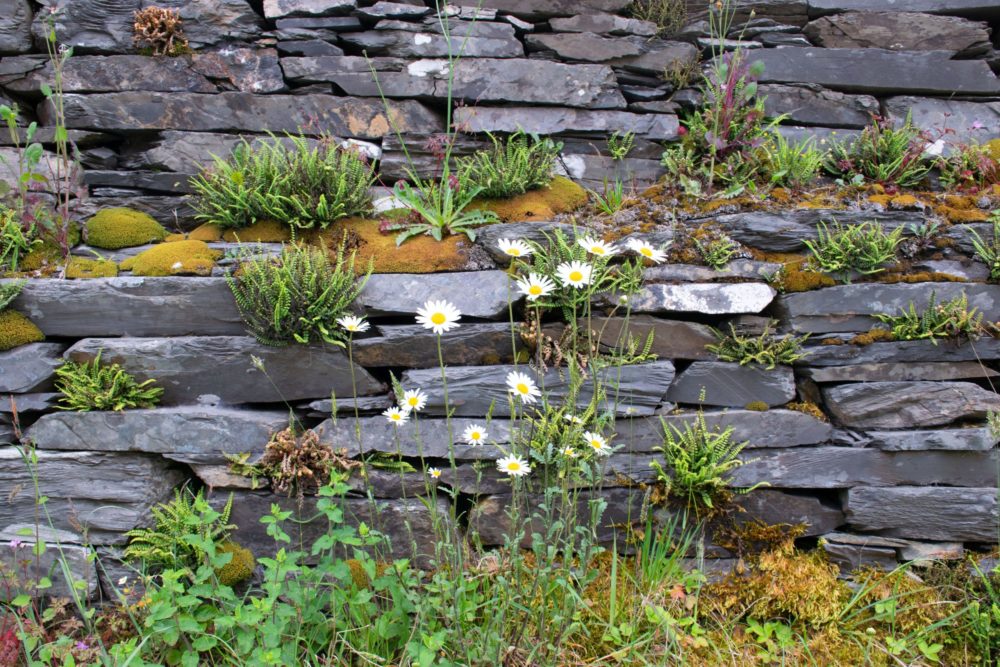A letter from Tipperary

Catherine Duigan finds connections between slate working in Wales and Ireland
The Kings of Ireland feared satirical bards and what they might say about them.
With a fortress on the shores of the largest lake on the River Shannon, King Eochaidh Mac Luachta was unfortunate to have a visit from an especially malicious bard, Aithirné the Importunate from Ulster.
He was notorious for making unreasonable and cruel demands as payment for his entertainment, to maintain peace, and as a bribe to protect the reputations of his hosts.
Aithirné wanted the King’s only eye as his reward and fearful Eochaidh immediately plucked it out and handed it to the bard. The blind King was then led to the shore of the lake to clean the wound and the water remained blood red as reflected in its Irish name, Loch Deirgeirt, ‘Lake of the Red Eye’ or simply ‘Lough Derg’.
Slate grey
But when we stood on the slopes of Tountinna in County Tipperary, the waters of Lough Derg were slate grey under an overcast sky.
The strong cold wind blowing across from County Clare had combed the surface waters with ragged parallel white lines of froth, ‘Langmuir Streaks’; windrows named after an American scientist, Irving Langmuir, who first described their physical formation on the ocean.

Rattling bones
We retreated down into the patchwork of woods and fields, some glowing with buttercups, on the margins of the lake, to look for the folk-art decorated gravestones in Castletown. It was a peaceful cemetery full of ethereal sounds, imagined and real. The central cruciform images on the ancient gravestones were surrounded by trumpet blowing angels, the rattling bones of skeletons, fluttering birds and ornamental flowers. Liquid calls of wrens and robins merged together in the background.
Tomb of a lost Welshman
Near the corner of the medieval ruined church, a massive horizontal undecorated slab marked the tomb of a lost Welshman who brought his slate quarrying expertise to Tipperary, never to return.
Sacred
to the Memory of
Griffith Parry
Quarryman
native of Llandegai
near Bangor, N Wales
He died at Curraghbally
the 17 Oct 1847
aged 58 years.
Unlike Irish Kings, this lost Quarryman had no reason to fear the bard, as Dewi Wnion has written in classical englyn unodl union metre on the lower half of the gravestone:
Gwir enwogwr o wynedd wedd iesin,
sydd isod yngorwedd:
Parry y cyfail purwedd,
Purwych a Fu parch iw Fedd.
This translates as: “A truly famous man from Gwynedd, of bright appearance, is lying below: Parry, the friend of pure form, very excellent was the respect to his grave.”

Rockfall
Griffith Parry lost his life alongside several other colleagues when they were buried by a delayed rockfall after returned to work following blasting. However, he is not alone, because Maurice W. Morris, buried 18 March 1839, also from Bangor, lies beside him.
We returned to the Arra Mountains to take a closer look at the slate quarry sites where hundreds of men worked and from which at one time approximately 100,000 tonnes of stone were removed annually. It was transported by horse and cart to quays on Lough Derg and exported as “Killaloe Slate” by steamer to England and Scotland.
Irish Famine
Welsh quarrymen were recruited for their proven skills and the language was spoken on the nearby village streets of Portroe. During an Gorta Mór, the Irish Famine (1845-52), many emigrated from this area to work in quarries in America, like Slate Valley in Granville, New York.

Today pale red wild strawberries, piercing oxeye daisies, golden cushions of moss and clumps of small black stemmed spleenwort ferns inscribe themselves into the cracks in the roadside walls and piles of slate waste. Excavators stand amongst reworked mounds of shattered slate and a flooded quarry is converted into a diver training facility.
Different rocks
Dr Patrick Roycroft, Curator of Geology at the National Museum of Ireland, clarified that “Although both are mudstones, the Tipperary and the Welsh slates are actually very different rocks, formed at least 70 million years apart, but united in being made into slate during the Caledonian Orogeny which took place when continents collided over 400 million years ago. All this happened when this area of the world was in the Southern Hemisphere, too – we’ve been tectonically drifting northwards together for the last 400 million years and continue to do so!”
Used in a range of public and private buildings, Killaloe Slate was the leading high quality Irish product. In a short but perfect poetic verse carved into stone on his restored tower house, the poet William Butler Yeats acknowledges the use of these “sea-green slates”. Eventually these quarries faced severe competition from cheaper and more abundant supplies available from Wales for new buildings and repairs.
Today Killaloe and Bangor Blue slates mingle together to form a sheltering tapestry on the roofs of this northwest corner of Tipperary, reflecting a unique geological connection between two countries and their people.
Support our Nation today
For the price of a cup of coffee a month you can help us create an independent, not-for-profit, national news service for the people of Wales, by the people of Wales.





As mentioned ,in the mid 1800s many of the Welsh and Irish slatemakers ended up in the Vermont slate belt, where even the Irish quarrymen had a working knowledge of Welsh, growing up in the same “Patches” (Company villages) and working all day together. My Tipperary family lived next door to the bard Rowland Walters.